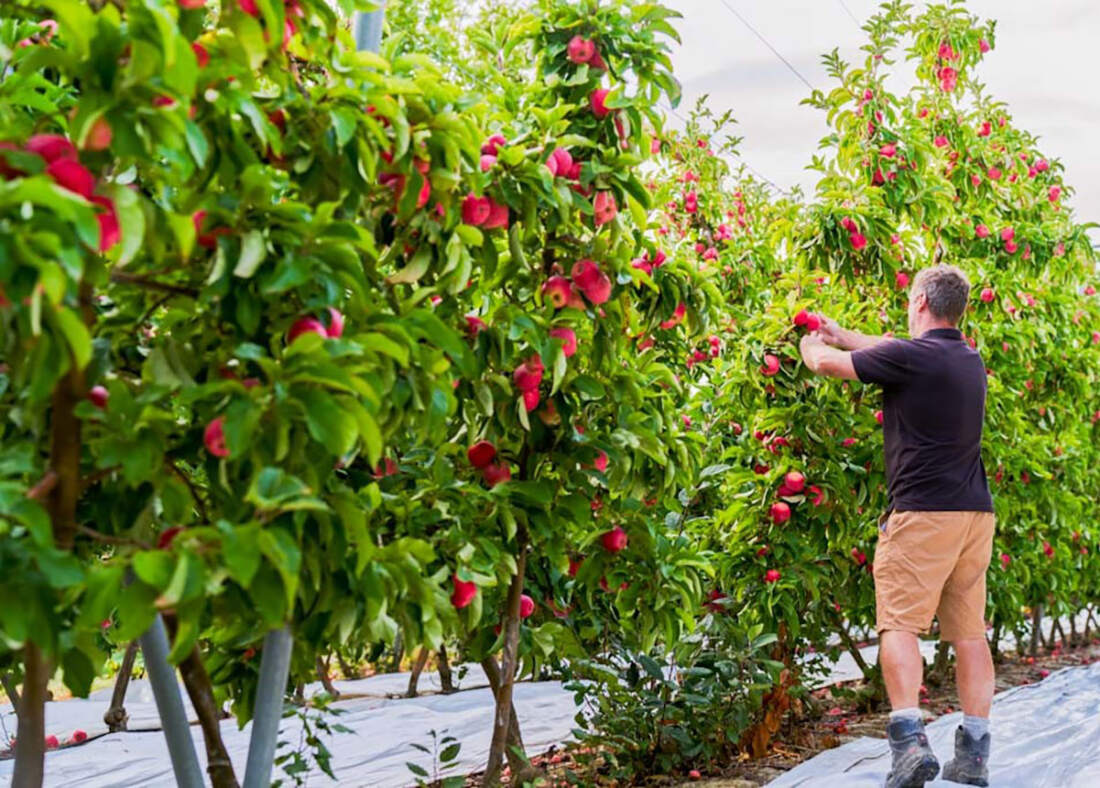Your journey to energy efficiency starts here
EECA’s orchard pathway provides free tailored tools and resources for businesses to help the sector save money and be more energy efficient.
Access bespoke Tools and resources and sign up for a series of curated emails below. By signing up, you will:
- Find out when new resources are added
- Get invitations to events and webinars
- Learn about new co-funding opportunities
The impact of orchards
New Zealand has thousands of commercial orchards, of which kiwifruit production leads with 2,800 growers, followed by 300 apple and pear growers, 1,400 avocado growers, and 250 summerfruit growers. These growers are supported by post-harvest grading and packing operations.
- On-orchard equipment, machinery and irrigation systems are the largest ongoing energy costs for orchards.
- In 2022, 73% of the total energy consumed by the non-dairy agriculture sector was attributed to off-road internal combustion engines – equal to 552,000 tCO2e.
- One of the biggest opportunities to reduce costs is to reduce demand, alongside optimising irrigation systems and employing demand flexibility to support grid resilience.
- In orchards, finding efficiencies can also open new ways to improve resilience through smartly integrating new renewables/electric power investments with the network.
This pathway focuses on managing fuel loads, improving energy efficiency and exploring fuel switching opportunities to help reduce costs.
Tools and resources
These dedicated tools and resources have been designed by industry experts especially for the orchard sector.
This pathway will identify, measure, optimise and reduce fuel and energy demand in your business. Work your way through them at your own pace, put the lessons into practice, and start seeing results.
3 steps to reduce your carbon footprint
The Orchard Sector Pathway starts with energy efficiency. The end goal is to reduce carbon emissions and manage energy loads, but by first taking steps to improve existing processes, equipment and operations, your transition will be more efficient and more cost effective.

Step 1: Measure emissions and set targets
The most important step in energy management and conservation is measuring and accounting for energy consumption.
Step 2: Optimise equipment and improve processes
Reviewing and adjusting the way your equipment is performing can be a big win for energy reduction, cost reduction, and increased productivity.
Step 3: Demand and emission reduction opportunities
New technology or upgrades to existing processes can reduce energy demand. This step looks at equipping businesses with the latest innovations in their space to reduce the demand for energy.
Register
Want to receive tailored tools and resources straight to your inbox? Sign up to the Orchards Sector Pathway now.
Read next
-
Driver optional – electric tractor leads the way for low emissions rural transport
Forest Lodge Orchard drives into fossil fuel free farming.
- Case study
- Electric vehicles
- Innovation
-
Recreational Services | Electric mowers
Recreational Services share their success trialling two fully electric commercial ride-on lawnmowers in their parks and facilities maintenance business.
- Co-funding
- Electric vehicles
- Innovation
-
Fighting frost with electric fans
A cost and emissions saving opportunity for New Zealand growers.
- Case study
- Electricity
- Innovation

